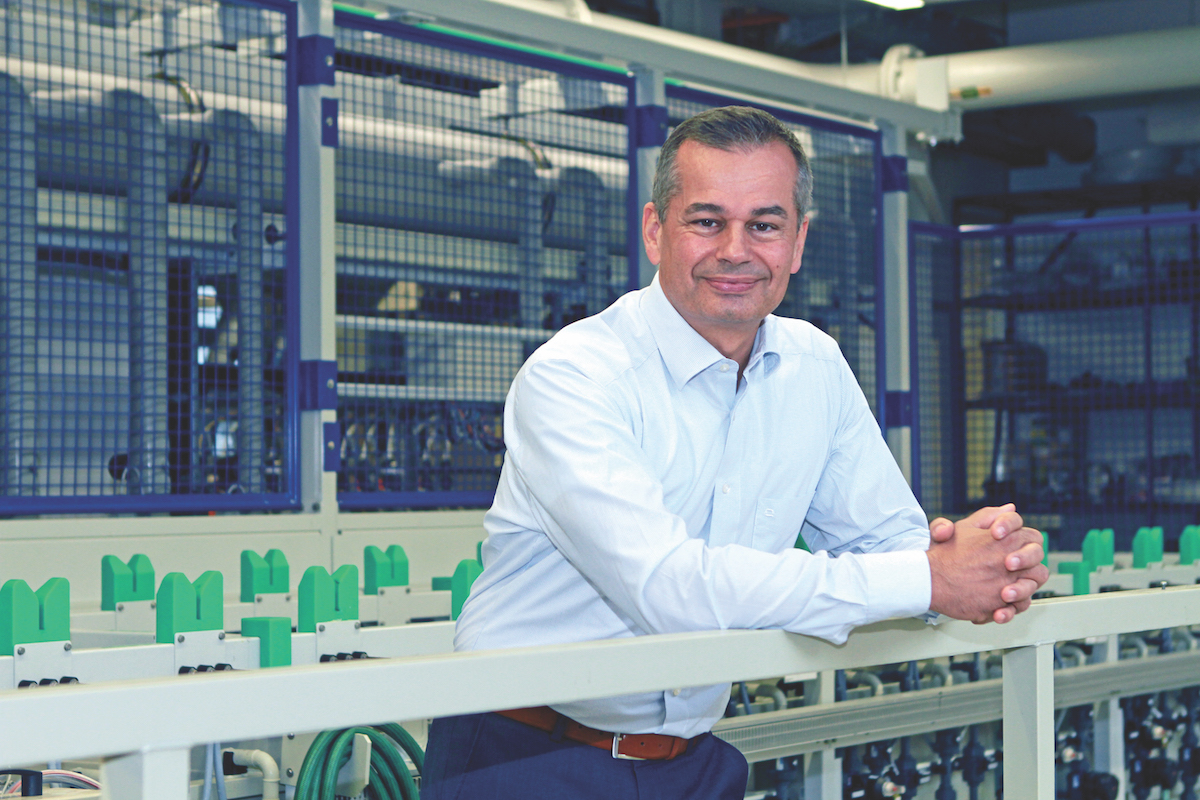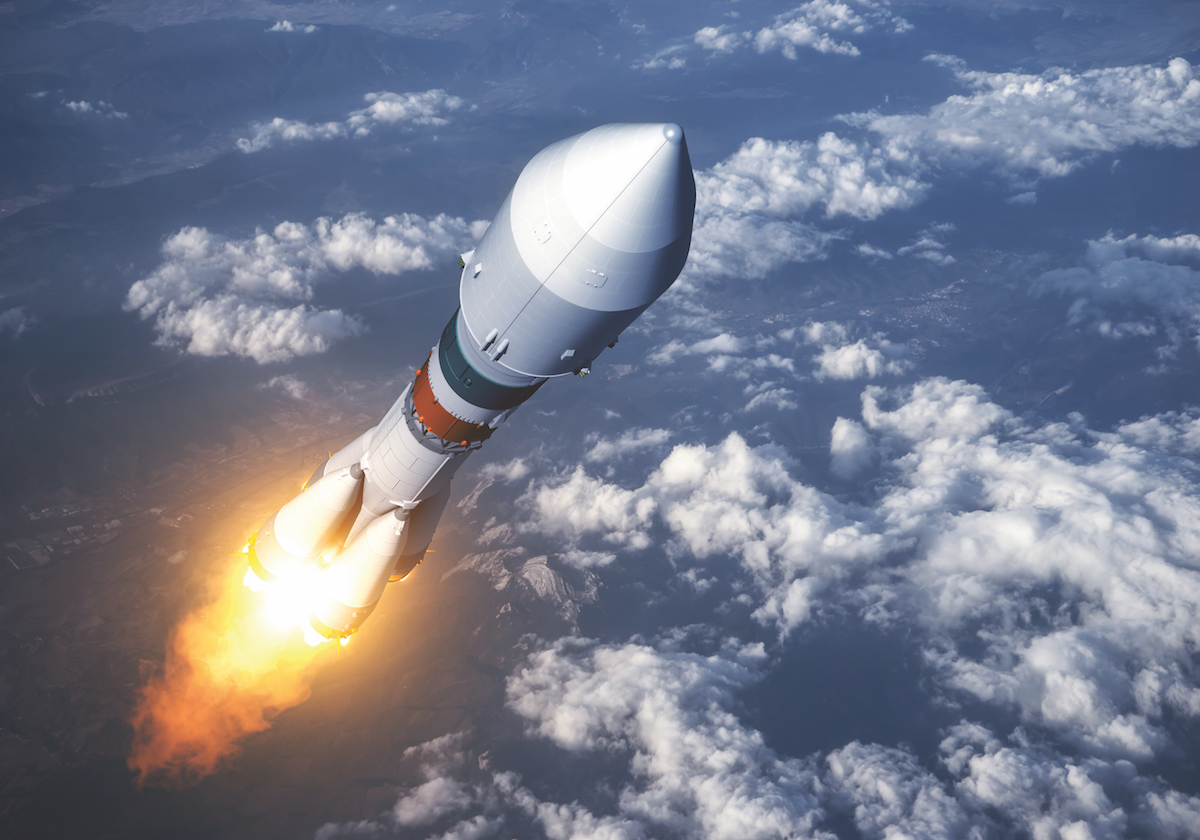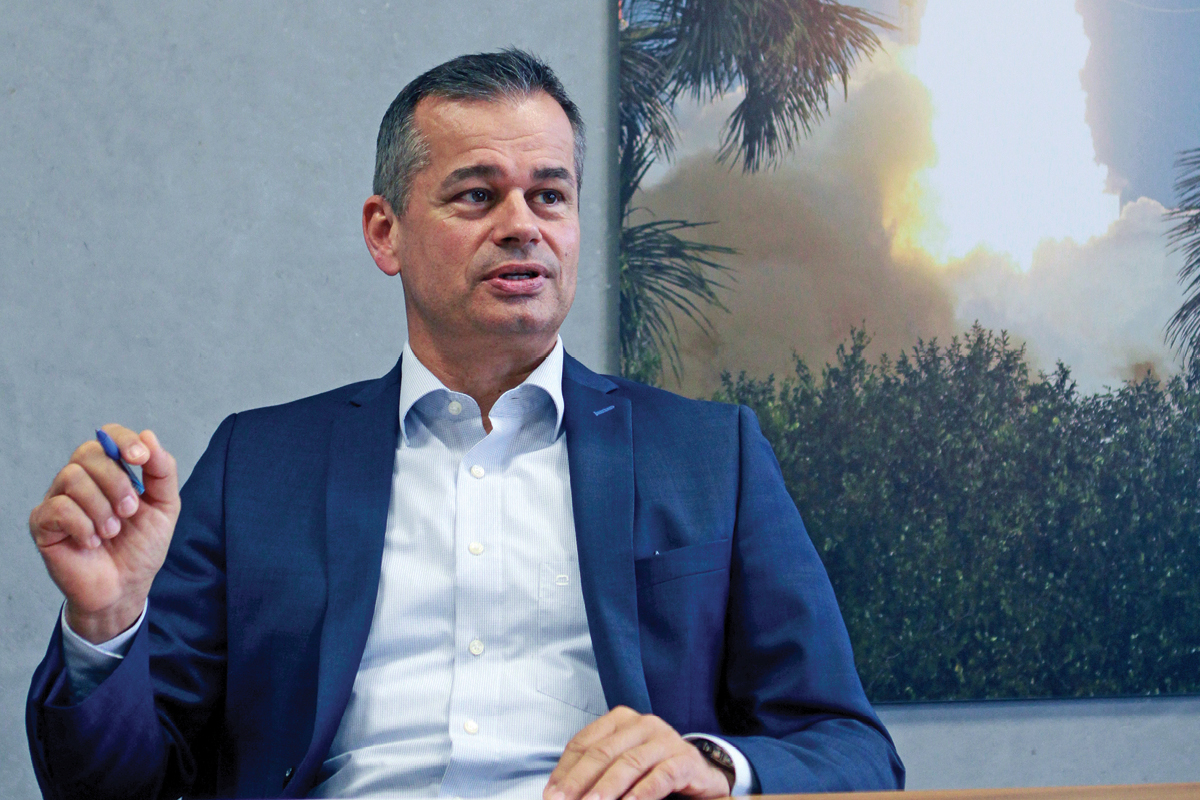In October 2015, German space satellite equipment manufacturer Tesat-Spacecom was having its best year yet. The employee count was the highest it had ever been, and its revenue and profit were good and stable.
In the years prior, the company had been on a steep growth trajectory and Andreas Hammer was the company’s incoming CEO. However, something wasn’t quite right. Almost all commercial communications satellites that get awarded worldwide are equipped with Tesat-Spacecom products.
In 2014 there were 24 GEO-stationary satellites. The following year, that number dropped to 16. In 2016, it declined again to 12. By the end of last year, the number of satellites awarded reached its all-time low with seven. How had this sudden decline come about?
After all, Tesat-Spacecom and its predecessor companies had been around for more than 50 years and hadn’t had to deal with such a problem up to that point. Clearly, something had to change.
Andreas believes there are myriad explanations, one of those being a major lack of industry innovation. That the space industry would have this problem, many would find surprising; however, there are several factors outside its control. For one, the industry has a long innovation cycle that only continues to stretch longer by the year. The lifespan of a space satellite is usually around 15 years.
A business case for putting a satellite into space and maintaining it has to account for a time frame of up to 20 years. “It’s a very expensive endeavour for an operator to put a satellite into space. You easily can invest €300 million or more,” Andreas explains.
“Then you have to plan at what space position you want your satellite, and at what capacity and specifications. After that, you have to select a satellite prime to build the satellite, which can take 1.5 years. Then you need 3.5 years to build the satellite. That’s five years already gone. Then you have to put the satellite into space, launch it, get it in the GEO-stationary orbit and have it fixed there.”
Safety first
There is also the understandable need to get everything right the first time. Having plied his trade primarily in military planes for a significant chunk of his career, the mantra for Andreas has always been ‘safety first’. Everything is about preventing any life-threatening incidents that may occur.

In space, this is even more important, because the equipment is much more expensive. “You can’t do any maintenance at all once you put the satellite into space. It has to work in really bad and threatening conditions, with radiation, temperature… Everyone in the space industry is concerned about quality,”
he says.
“If they have a good experience with them, manufacturers in the space sector don’t like changing suppliers – it’s too risky. However, you can’t keep up this attitude because, on the ground, many things are changing fast.”
There have been rapid advancements in communication technologies. Andreas thinks one reason for the dramatic market drop for Tesat-Spacecom has been due to ground operators promoting their business cases, where they make sure their equipment has the highest quality technology at the most reasonable price.
Open to innovation
While the space equipment industry has gotten away with the lag in innovation over the years, Andreas knows this simply cannot continue. “The hunger for Big Data and big bandwidth actually impacts everything ongoing in space because you can’t connect the networks on the ground and in space if there are so many differences in bandwidth and speed,” says Andreas. “This means the space industry has to be more open to innovation than it has been in the past.”
Or perhaps hitting the innovation wall could simply be a lack of coordination between the sales and engineering departments on both sides: Tesat-Spacecom and its customers. At the start of 2016, Tesat-Spacecom put together a joint engineering and sales team that travelled around doing workshops with the satellite primes to discuss solutions for the future.
Based on the discussions and workshops, they were able to build a new line of highly densified and integrated (HDI) products, making them very efficient, but much smaller with less power consumption. Andreas says there is now demand in the market for these new products with a proposed price tag of €700 million.
As Tesat-Spacecom continues putting new products into place, it is looking for new suppliers. In particular in Tesat-Spacecom’s laser communication domain there are lots of opportunities. Two years ago, Tesat-Spacecom had LCTs (Laser Communication Terminals) on two GEO-stationary and five low-orbiting satellites. Since then, it has decided it needs to increase its LCT portfolio and have them placed on other satellites and constellations.
Despite the changes to workload in the past few years, Tesat-Spacecom has miraculously avoided any major layoffs in its more than 1,200-strong workforce. Instead, in September last year, the executive boards, together with the company’s works council, agreed to reduce working time and salaries
of everyone across the firm. Tesat-Spacecom also received some government support – something the country’s automotive industry also did when it was going through its own job crisis – in order to keep its workforce.
While Andreas concedes the move is unlikely to maintain existing employee morale let alone boost it, the positive is that the company can keep all its personnel.
“You don’t have to pay a lot of money for severance packages. You don’t have to take provisions, and it provides transparency to the core of the company and its people, because it’s something they all must agree to,” he says. “They have confidence the market will come back, and it’s an incredible demonstration of how management and the workforce are actually cooperating in that area.”
Challenges facing the industry
What is undeniable for the space technology industry is that the days of the 20-year business case are long gone. Clients want to include the newest innovations, and having business cases stretch out over decades will not allow that, according to Andreas. He thinks this could go in one of two directions.

“What they’re thinking is either have a satellite which is much smaller, build it in a shorter time with a shorter lifespan. Instead of 15 years, it might be five years,” he says.
“Or, they are going to make enormous satellites where they have a lot of flexibility so they can change the mission over time. Currently, it is heading in both directions simultaneously.”
Trained as an aerospace engineer, Andreas spent nearly five years at Airbus Group’s aero sector, specialising in military aircraft. When the CEO position for Tesat-Spacecom opened up, he simply couldn’t turn down the opportunity. “During my studies, I specialised in deep space flying, which was my first interest when I was young. Everything came together,” he notes. “I wanted to come to a company that was agile, flexible and active on the global market.”
I wanted to come to a company that was agile, flexible and active on the global market.
As a subsidiary of Airbus, Andreas reports to a supervisory board, meaning no-one is interfering in Tesat-Spacecom’s day-to-day business. That keeps the involvement of Airbus at arm’s length, so Tesat-Spacecom can remain totally independent in its operation. “By doing so, we are supplying, of course, the competitors of Airbus itself,” he says.
“But that’s the business model Airbus wanted. It’s normal for Tesat to have firewall agreements and non-disclosure agreements with our parent company and, of course, keep our own branding.”
What attracted Andreas to Tesat-Spacecom was the chance to work for commercial clients as opposed to the government clients he was used to at Airbus. “We’re taking on a limited number of space projects where we receive contracts from government space agencies such as DLR, the German Aerospace Space Centre, or ESA, the European Space Agency. Normally we have a split of 80% commercial business and maybe 20% business connected to government institutions,” explains Andreas. “The company is also typically German in that it’s export-driven, and this accounts for a bit more than 80% of its business.”
Andreas has put Tesat-Spacecom on its new program that, in his words, is “transforming like hell” in skills, tools and production lines to ensure its future sustainability. Further, he hopes it can stabilise business on its established product portfolio within the next two to three years. “We have to because this is where the money comes from right now.”
On the space technology front, the big prediction from Andreas is that “optical communication is the way of the future”. Given most communication is radio frequency based, the use of optical is still in its early stages of implementation. However, the market is now waking up to the fact that optical communication has many advantages and Andreas thinks it can be applied in space, not just on the ground.
“I’d like to see in the next 10 years that we have optical communication equipment on everything in space, like we have on the ground,” he says. “What it means is that we have to do a lot in order to make this happen and push it further in the market to the big corporations and suppliers. That’s just the way we have to go.”

